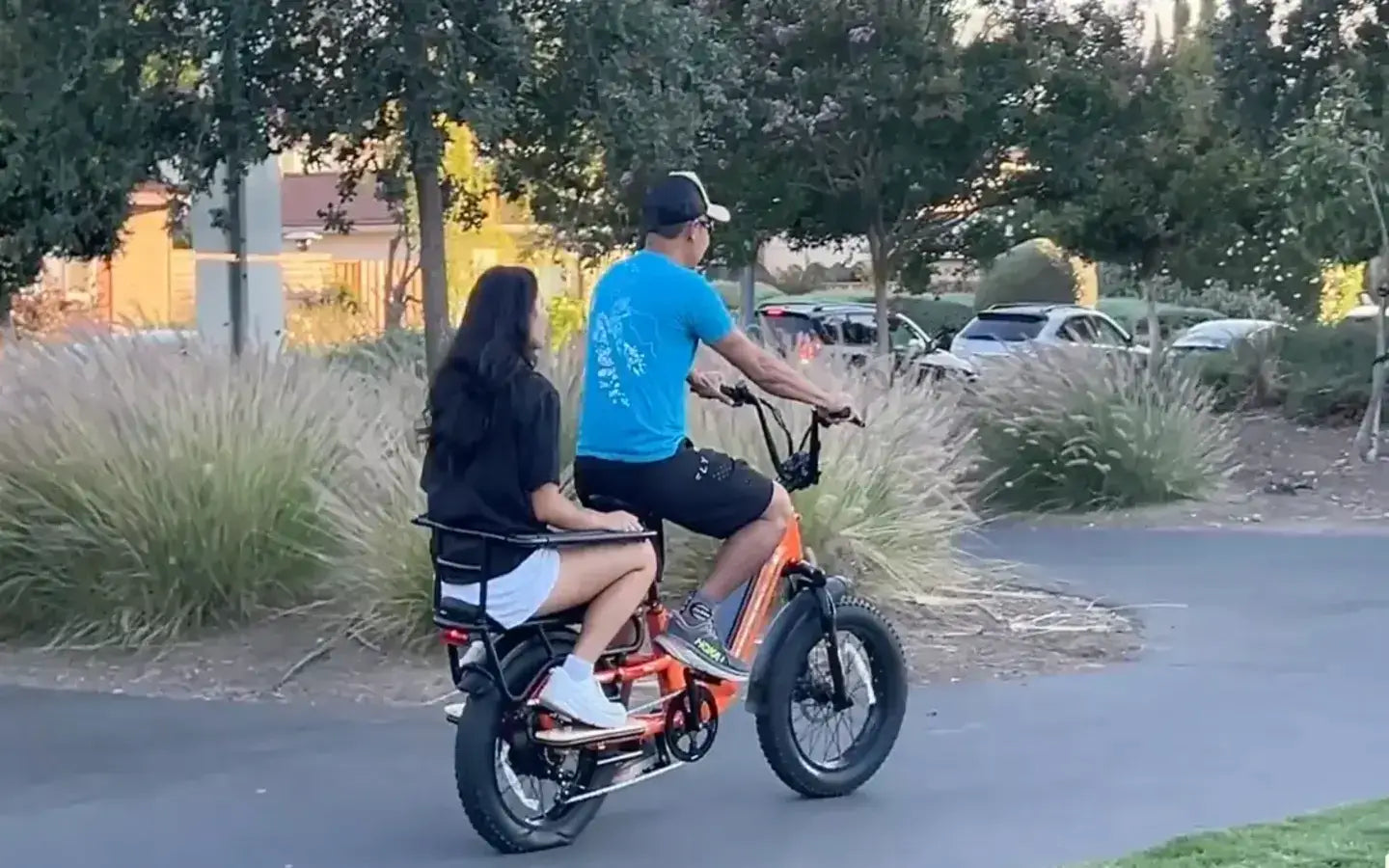
- by LiuJiazhu
What Are the Best Cargo Bikes for Urban Family Transportation?
- by LiuJiazhu
Urban Arrow Family, Tern GSD, and RadWagon 4 are top cargo bikes for urban families, offering spacious storage, electric assist, and safety features. Front-loaders excel in child visibility and stability, while longtails balance agility and cargo capacity. Prioritize bikes with hydraulic brakes, weatherproof accessories, and modular designs to adapt to growing family needs.
Front-load cargo bikes position cargo between the handlebars and front wheel, optimizing stability and child interaction. Longtails extend the rear frame for versatile storage, excelling in maneuverability and compact storage. Choose based on cargo type, riding style, and parking space.
Front-loaders like the Urban Arrow Family use a bucket-style design with a low center of gravity, ideal for transporting young children who need constant supervision. These bikes typically handle 2-4 kids (100-200 lbs) and integrate weatherproof canopies. However, their wider turning radius can challenge tight urban corners. Longtails like the Tern GSD use a rear rack system, supporting panniers, child seats, or groceries. Their slimmer profile suits narrow bike lanes and apartment elevators but may require older kids to hold onto handlebars. Pro Tip: Test-ride both styles—front-loaders feel like steering a boat, while longtails mimic a stretched-out commuter bike. For example, a parent hauling toddlers might prefer a front-loader’s enclosed cabin, while a family running errands could opt for a longtail’s adaptability.
| Feature | Front-Load | Longtail |
|---|---|---|
| Cargo Capacity | 200-400 lbs | 150-350 lbs |
| Maneuverability | Moderate | High |
| Price | $4,000-$7,000 | $3,000-$6,000 |
Key factors include load capacity, motor power, and weather adaptability. Assess your daily routes, storage space, and child ages to avoid underbuying or overspending on unnecessary features.
Start by calculating total weight: kids, groceries, and gear. Bikes like the RadWagon 4 handle 350 lbs, but electric models require robust motors (50+ Nm torque) for hill climbs. Hydraulic disc brakes are non-negotiable for safe stops in rain. Beyond specs, consider practical details: Can the bike fit through your front door? Does it include attachment points for child seats or a footwell for toddlers? Pro Tip: Prioritize bikes with belt drives over chains—they’re quieter and require less maintenance. For instance, a family in rainy Seattle might prioritize fenders and integrated lights, while a NYC commuter needs a compact, theft-resistant design. Always check local laws—some cities limit e-bike speeds or cargo bike access to certain paths.
Electric cargo bikes offer pedal assist for effortless hill climbs and long commutes but cost more and require charging. Non-electric models are lighter and cheaper but demand greater physical effort, making them better for short, flat trips.
E-bikes like the Riese & Müller Packster 2 dominate urban hills with 500W motors and 75+ mile ranges, but their 70+ lb weight complicates parking. Non-electric bikes, like the Yuba Kombi, weigh 45-55 lbs and suit flat areas but strain knees on inclines. Battery placement also matters: mid-drive motors (e.g., Bosch) balance weight better than rear hubs. Practically speaking, if your school run includes a 10% grade, skip non-electric. However, if you’re budget-conscious and ride under 5 miles daily, a manual bike saves $1,500+. Imagine an e-cargo bike as a minivan with turbocharging—ideal for heavy loads but needing regular “fuel stops” at outlets.
| Aspect | Electric | Non-Electric |
|---|---|---|
| Cost | $3,500-$10,000 | $1,200-$3,000 |
| Range | 20-75 miles | Unlimited |
| Maintenance | Battery, motor | Chain, brakes |
Prioritize hydraulic disc brakes, integrated lighting, and stable kickstands. Child safety harnesses, wheel guards, and reflective side panels further reduce risks in traffic.
Cargo bikes need stronger brakes than standard bikes—look for 180mm rotors and 4-piston calipers to stop 400+ lbs swiftly. Lighting is critical: models like the Urban Arrow Family include automatic LED headlights and brake lights visible from 100+ meters. Stability features matter too: a double-leg kickstand prevents tipping when loading kids. But what if a child leans mid-ride? Wheel guards prevent foot entanglement, and 3-point harnesses keep toddlers secure. For example, Dutch brands like Babboe prioritize sidewalk-friendly turning signals and adjustable speed limiters. Pro Tip: Add a mirror to monitor kids without turning—a lifesaver in busy intersections.
Yes, with proper harnesses and enclosed cabins, but always use helmets and check local age/weight regulations for child passengers.
How much does a good family cargo bike cost?Expect $3,000-$7,000 for reliable models—higher costs reflect cargo capacity, motor power, and premium safety features.
Can cargo bikes replace a car for urban families?Absolutely! Many families ditch cars for cargo bikes, saving on parking, fuel, and insurance while reducing their carbon footprint.
Share:
Which Is More Cost-Effective: Commuter Bike or Electric Scooter?
What Safety Features Prioritize Commuter Bike Protection?